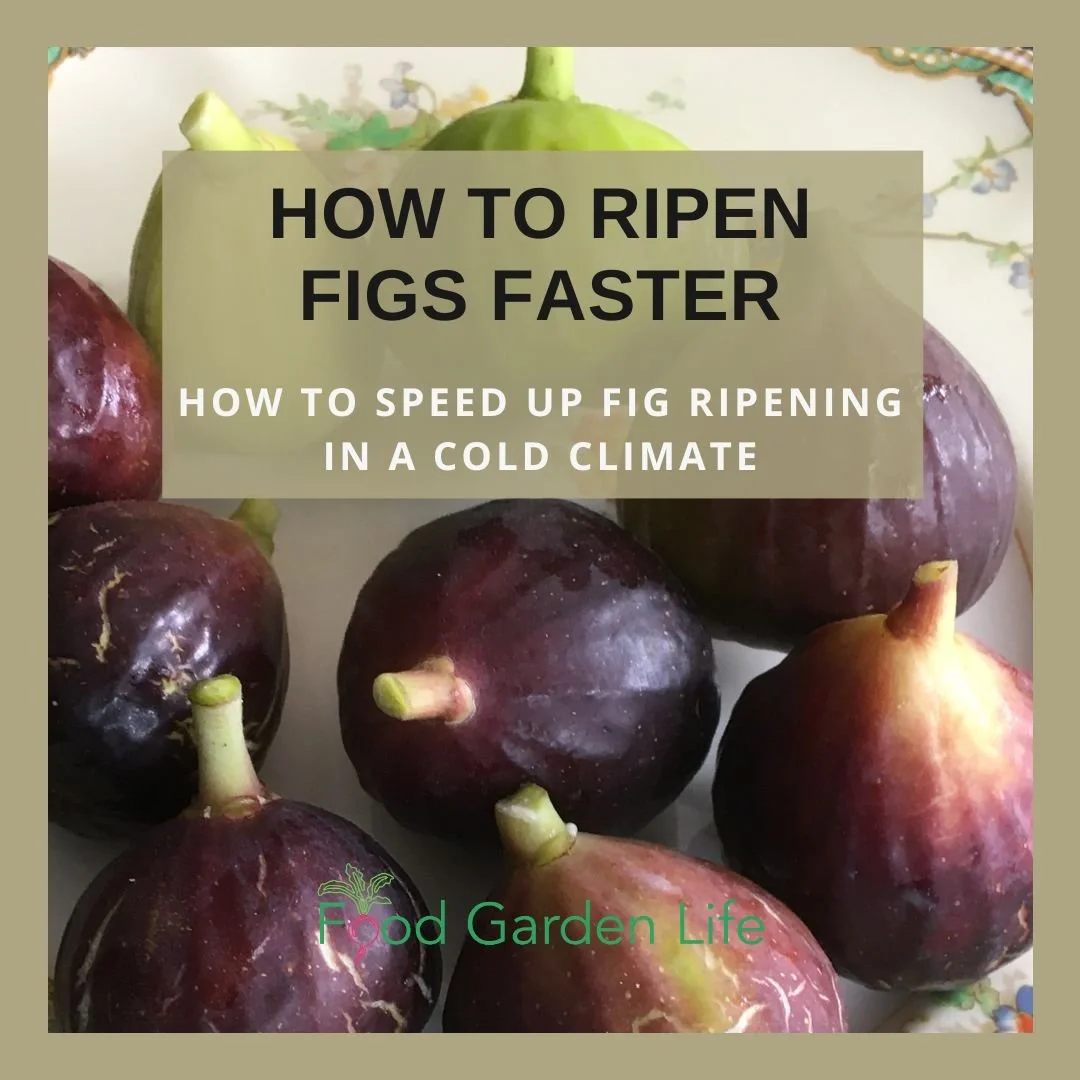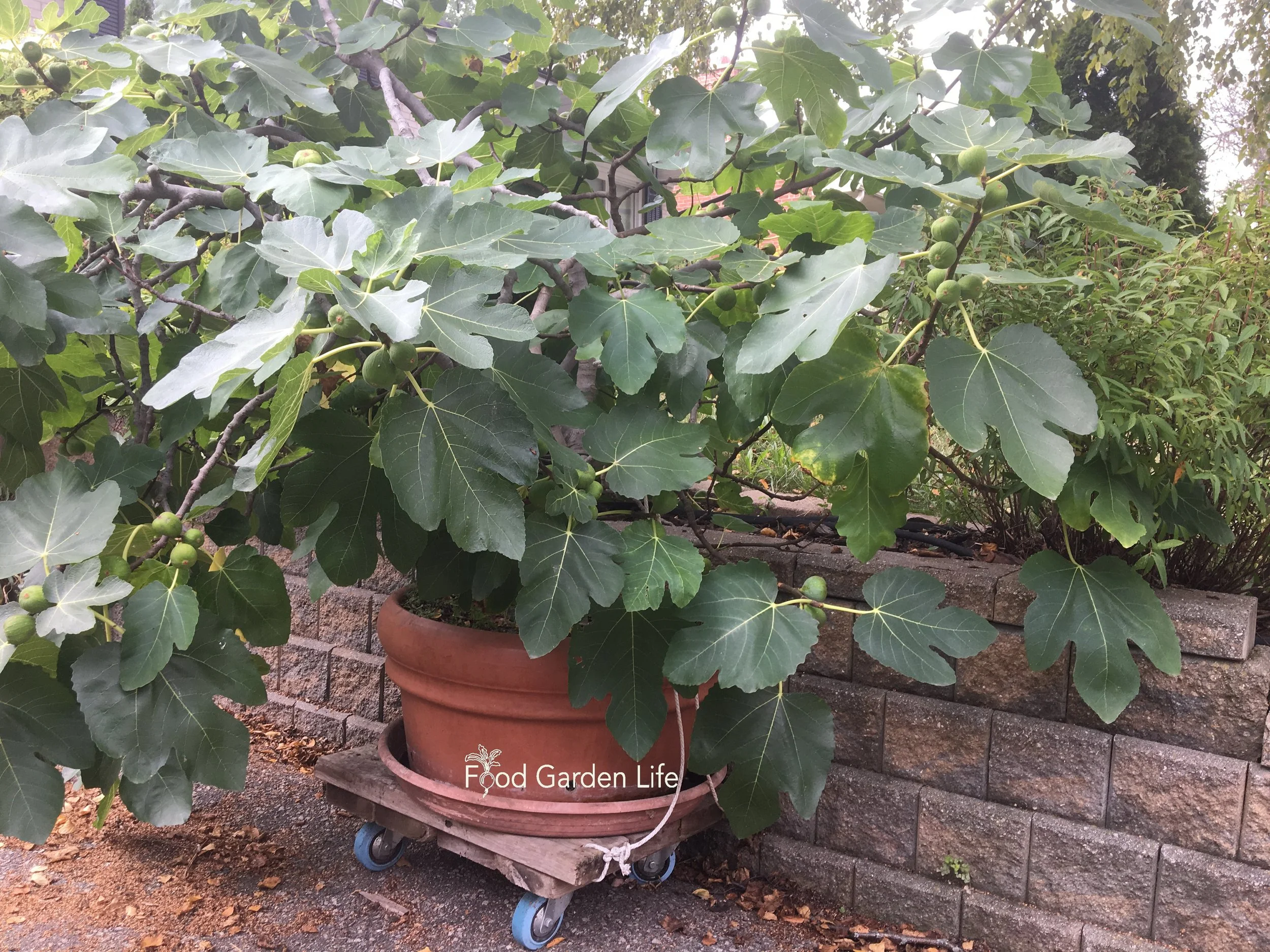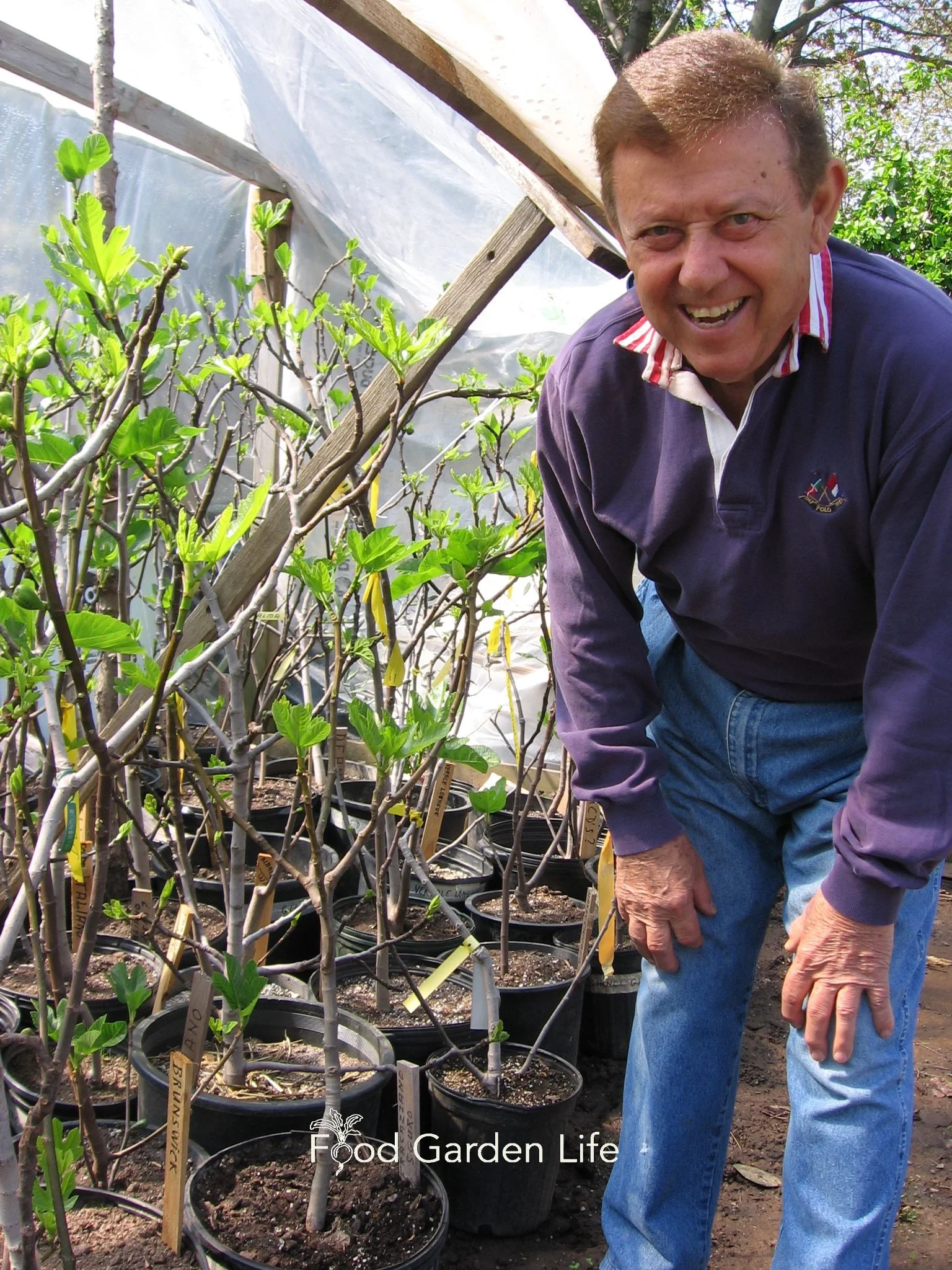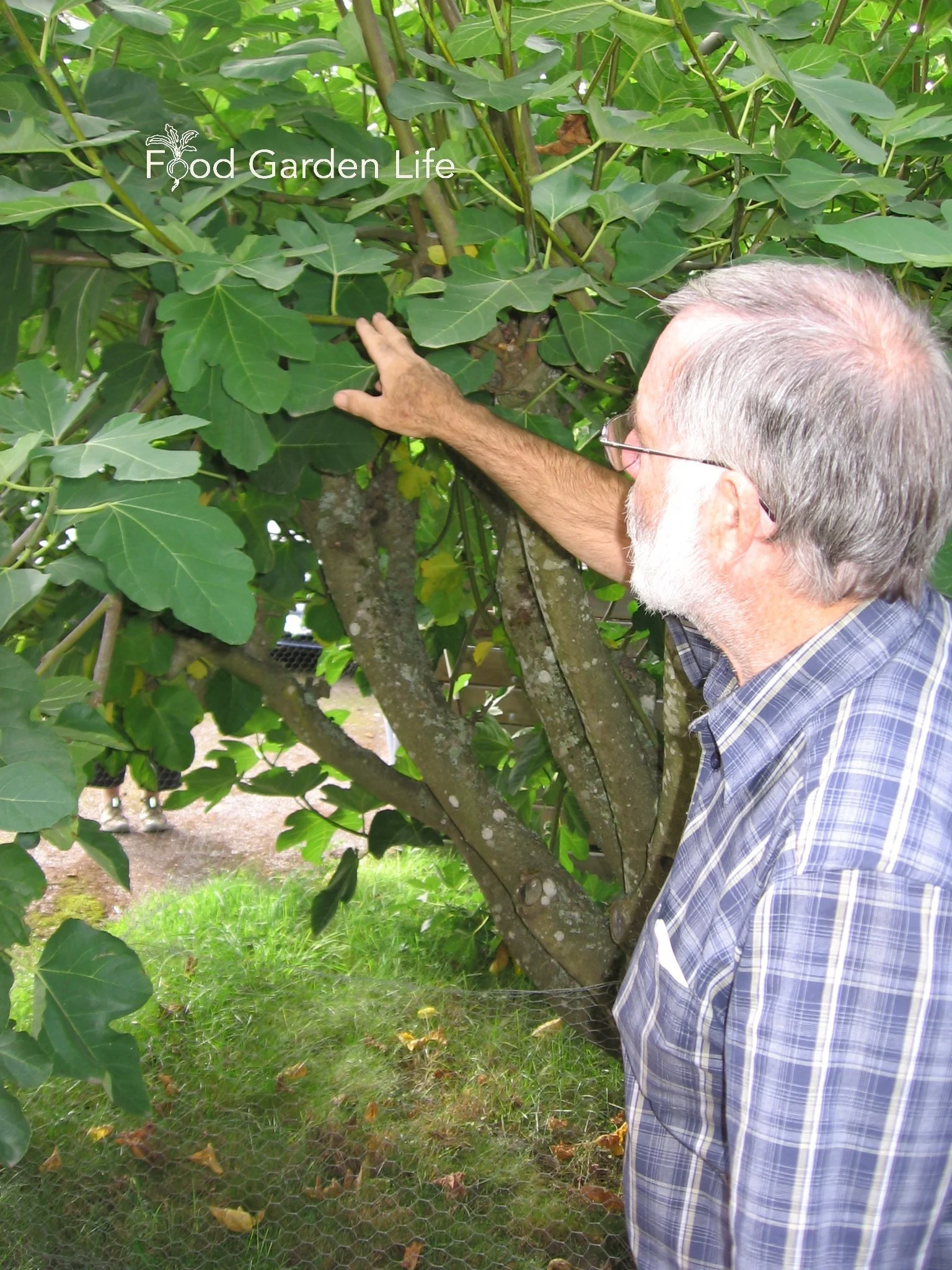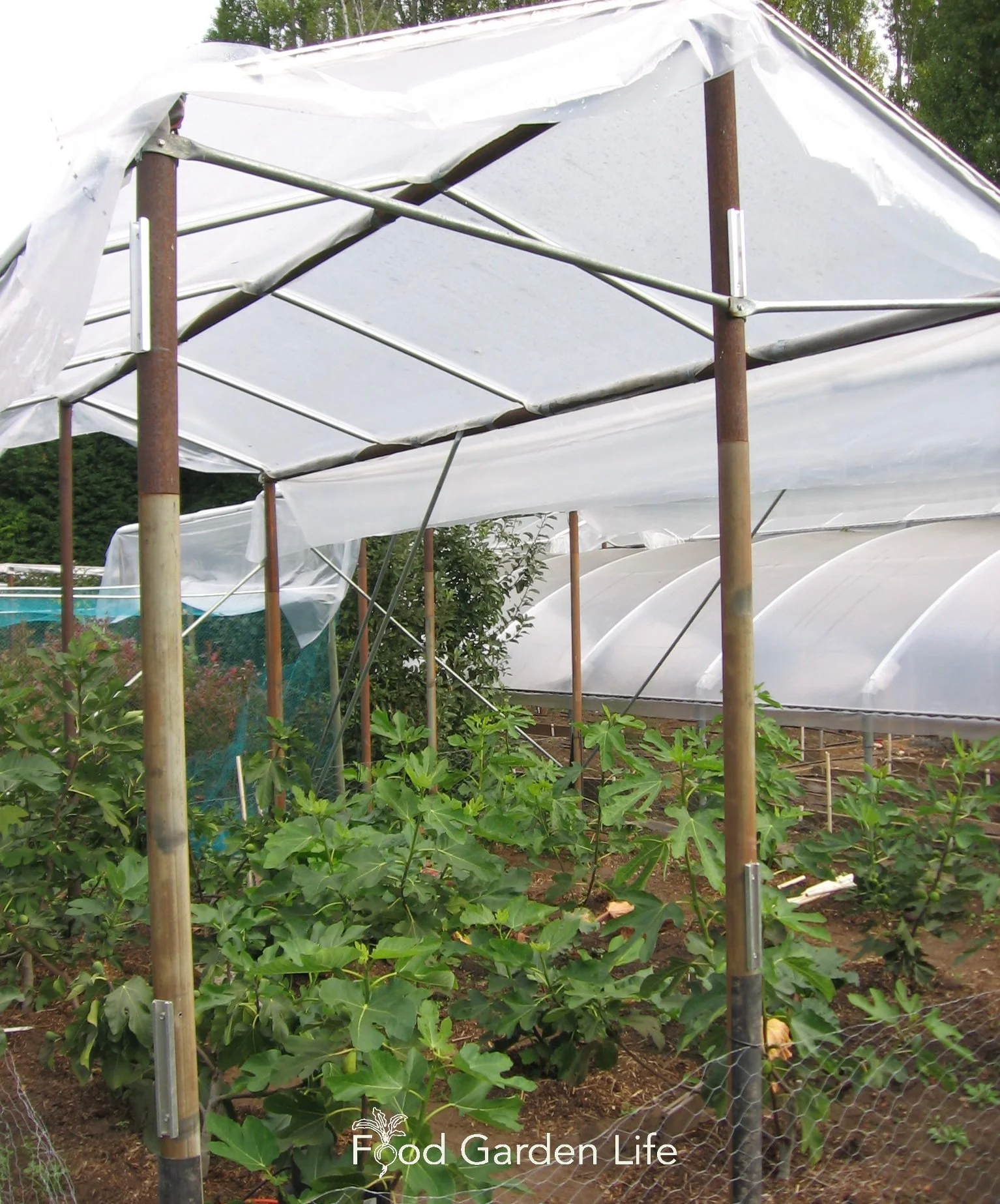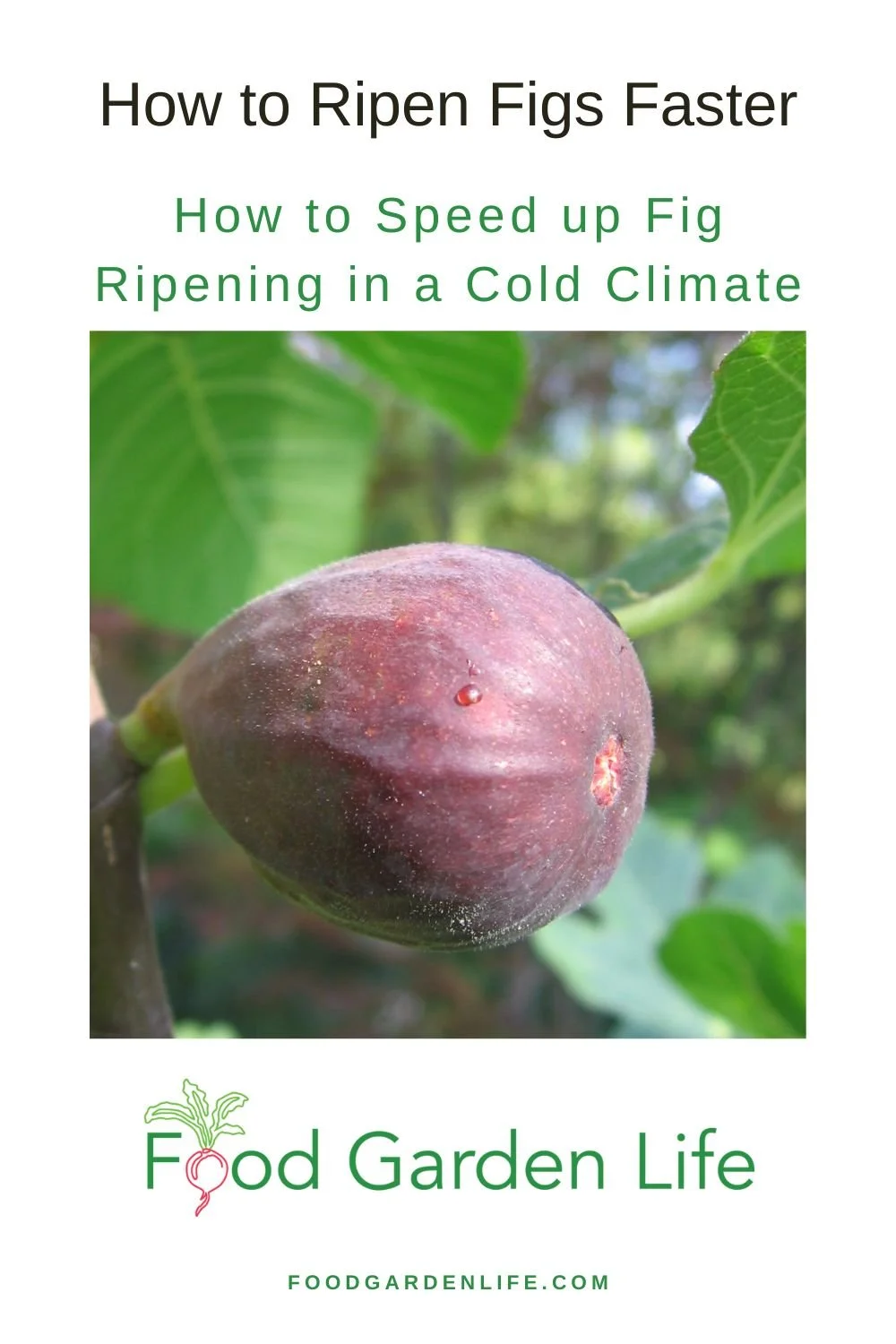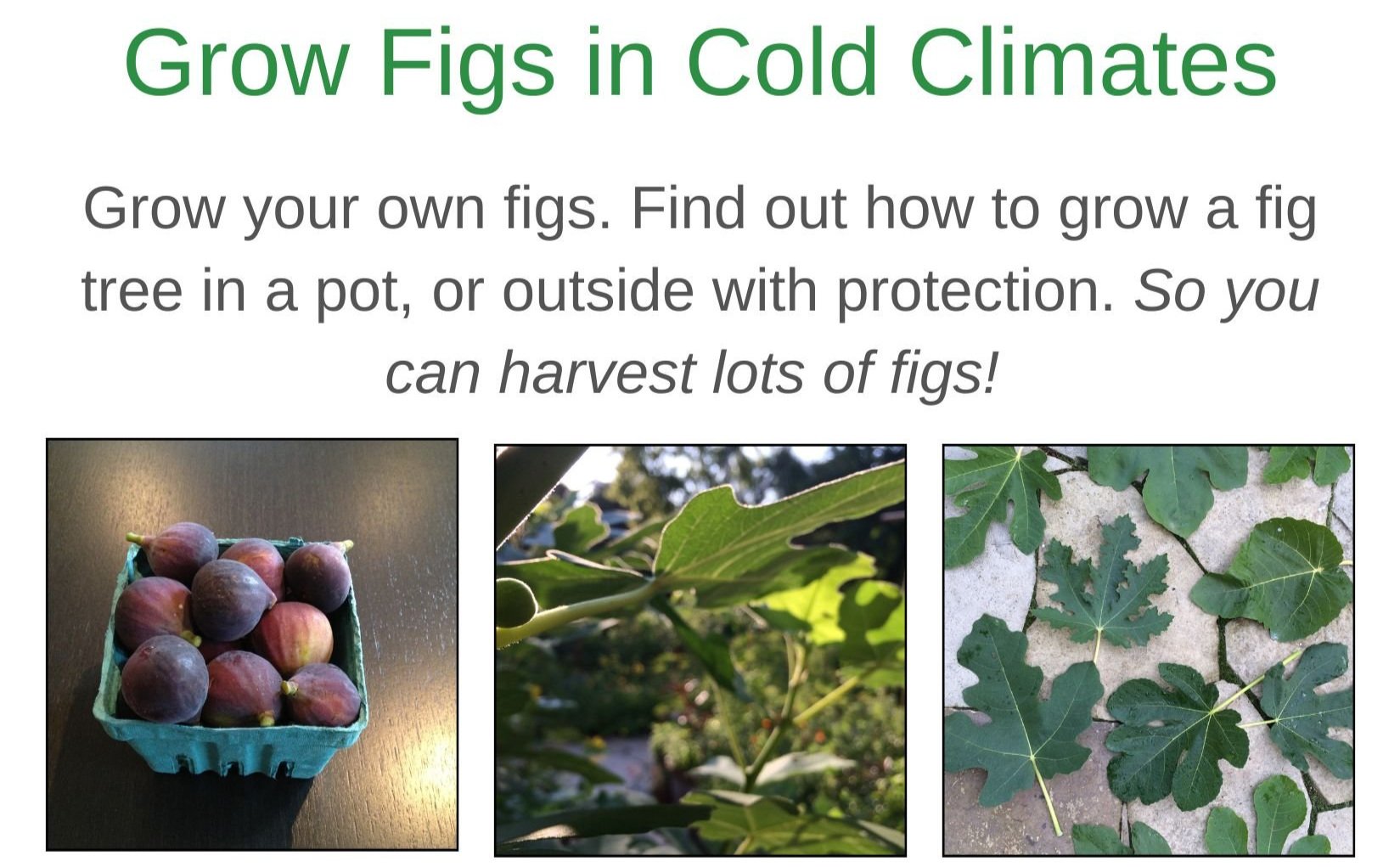By Steven Biggs
Why Won’t My Figs Ripen?
Find out how to ripen figs faster.
Lots of Figs...Unripe Figs
“Help! I have lots of unripe figs. My figs aren’t ripening!” I start to get messages about figs not ripening in late summer.
After a summer of caring for a fig tree, people want more than bullet-hard green figs. There’s nothing more disheartening that frost arriving before you’ve tasted any of your homegrown ripe figs.
For gardeners in cold climates (and moderate maritime climates such as the Pacific Northwest) figs that don’t ripen early enough is a common challenge.
Luckily, you can solve it. Keep reading to find out how to ripen figs faster.
Reasons Figs Don’t Ripen in Cold Climates
There are a few reasons figs don’t ripen early enough in places with short summers or mild summers.
A late start in spring
Poor choice of fig varieties
Not enough heat
In this post, we’ll look at adding heat to speed up the ripening process, so you can enjoy fresh figs.
Get more fig-ripening ideas in my post 7 Tips to Boost Northern Fig Tree Harvests.
How to Ripen Figs
To Ripen Unripe Figs, Focus on Heat
This book will help you apply creative “fig thinking” in your garden and harvest fresh figs even if you have a short summer or cold winters. With some fig thinking, you can harvest figs in areas where they don’t normally survive the winter! In this book, I share many of the questions I have been asked about growing figs in temperate climates, along with my responses.
In areas with short summers extra heat is one way to get figs to ripen faster—before winter arrives.
Extra heat is also helpful in areas that have cool summers, like the Pacific Northwest.
To give a fig tree extra heat there are a couple of simple things gardeners can do:
Grow the fig tree in the warmest possible location
Capture heat around the fig tree
Let’s first explore location—and then think about heat-capture season-by-season.
Choose a Warm Location
Choose a warm location. More heat means more figs ripening during a short season.
Place a potted fig plant somewhere warm, such as a surface that catches and releases heat from the sun:
On a dark-coloured driveway or paved area
Next to a brick or stone wall
When planting fig trees in the ground, pick somewhere warm:
A south-facing exposure next to a wall
Next to a sunny driveway
My neighbour Natalie has a fig tree on a driveway, next to a stone wall. This is a warm spot that speeds up ripening.
Extra Heat in Spring
My fig mentor Adriano, next to the temporary greenhouse he used to get his potted fig trees growing earlier in the spring.
Extra heat in the spring helps to get your fig tree growing sooner…and that means it will produce figs sooner.
Getting fig trees growing early in the spring is always a balancing act. That’s because once they start to grow, the tender growth can be damaged by frost.
A greenhouse or temporary shelter is one way to provide extra heat in the spring to get dormant fig trees growing, while still sheltering them from frost.
Here are a couple of things I do in my garden to give fig trees extra heat in the spring:
I have some low-growing fig trees below ground level, in a trench. All I need to do to protect them for winter is cover the trench. I cover it with a clear sash—so as sunny spring days arrive, I can let light into the trench to warm things up earlier.
I have some fig trees shaped as ground-level cordons (one horizontal stem, a couple of inches above the ground). I can just pile leaves or straw over them for winter protection. Next to these cordons I have a low, south-facing stone wall. In spring, when I uncover these figs, I can lean an old glass door over top—with the stone wall at the back—to give the dormant step-over figs a warm space (The stone wall absorbs heat by day, releasing it by night.)
Boost Summer Heat
Bob Duncan pointing to a fig tree at his nursery. His climate is warm enough over the winter that fig trees don’t need protection…but cool summers mean main-crop figs don’t ripen well.
Here in Toronto I’m not worried about boosting summer heat. We have cold winters—but we also have hot summers.
It’s not like that everywhere.
Giving a fig tree extra heat over the summer is important in areas with cool summers, such as the Pacific Northwest, or other maritime climates.
Bob Duncan runs Fruit Trees and More nursery in Sidney B.C. He has mild winters, so his figs don’t need any protection over the winter. But he also has mild summers.
The mild summers mean that ripening main-crop figs (figs that form on wood from the current season) is challenging. Most fig growers in the Pacific Northwest, he says, focus on varieties the form a breba crop of figs (the early crop that forms on wood from the previous season.)
Find out more about breba figs.
Bob built a greenhouse with open sides to jack up summertime temperatures. The higher temperature within the greenhouse ripens main-crop figs.
Open-sided greenhouse. It’s not for winter protection—it’s to make conditions warmer over the summer.
Maintain Fall Heat
As fall arrives, nights are cooler and ripening slows.
Extra heat in the fall can speed up ripening of figs while also prolonging the ripening window.
To give a fig tree more heat in the fall, a temporary, unheated greenhouse works well. It also protects a fig tree from mild frosts and extends the harvest period by a couple of weeks.
Below, Joe from JCJ Acres has metal hoops over his figs, but only installs a tarp to protect the fig trees and ripen figs faster in the fall.
Other Ways to Ripen Figs Faster
Get more ideas to ripen figs faster in my post 7 Tips to Boost Northern Fig Tree Harvests.
FAQ: Ripen Figs Faster
Pin this post!
Will figs ripen off the tree?
No. That’s why a perfectly ripe fig picked straight from the tree is better than a store-bought fresh fig. Commercially produced figs are picked before optimal ripeness—so that they have a longer storage life.
Which months do figs ripen?
Here in Toronto, my breba figs ripen in late July and August. The main-crop figs ripen August until the trees go dormant, usually late October.
But when your figs will ripen depends on where you are, the weather—and the variety you’re growing.
What do ripe figs look like? When are figs ripe?
Here are tips to help when harvesting figs. Tell-tale signs that a fig is ripe are:
A soft neck, causing the fruit to droop
The fig retains the impression of fingerprints when gently squeezed
A drop of liquid coming out of the “eye” of the fruit (but not with all varieties)
If you pick figs and see white sap, you haven't let them ripen fully.
What does an unripe fig taste like?
The unripe fruit is not as soft and silky as ripe fruit. And the unripe figs are not nearly as sweet.
Are ripe figs green?
Sometimes. But figs come in many colours.
Here’s a guide to fig varieties for cold climates.
What can you do with unripe figs?
You can’t ripen them. But if they’re nearly ripe, I like to roast them. Find out how I use unripe figs. (Delicious!)
Video on Ripening Figs Faster
Find This Helpful?
If we’ve helped in your food-gardening journey, we’re always glad of support. You can high-five us below! Any amount welcome!
More on How to Grow Figs
More Fig Articles
Head back to the fig home page to search for fig articles by topic.
Fig Books
Fig Masterclass
The self-paced online fig masterclass gives you everything you need to know to grow and harvest your own figs in a cold climate!

